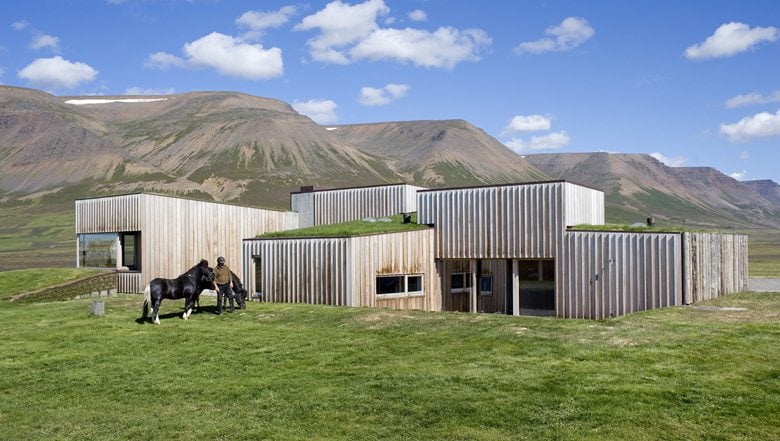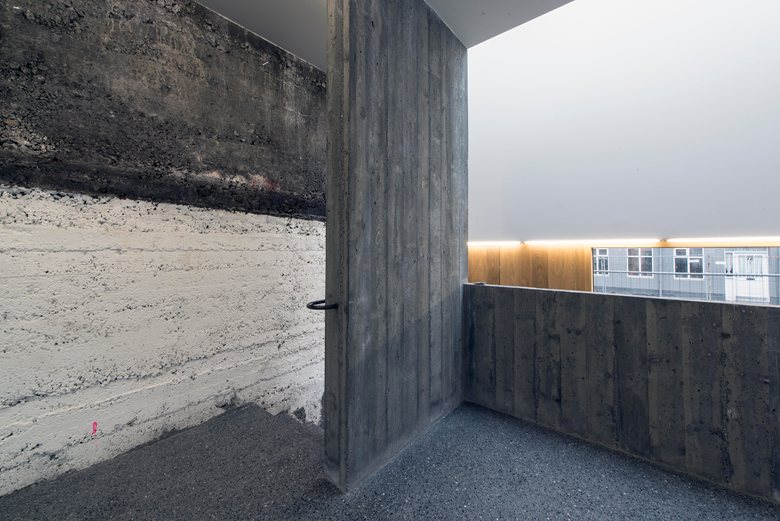Studio Granda Architects
Architecture Firm Reykjavik / Iceland
 5
5
The sands of an arctic volcanic desert are black, shadowless and constantly shifting. There are no trees, buildings or roads and footprints are instantly erased. To survive one must watch the celestial bodies, focus on the horizon, heed the warning of the winds and make clear and precise judgements. The necessary acuteness of thought and tuning of the senses is equivalent to the practice of architecture where listening, reevaluation and production are all equally interdependent.
Cities are built testimonies to mans will to move beyond the limitations of nature, they are purpose made machines to service ever increasing needs and expectations which cannot be provided by a bush or a rock. Within this built environment architecture has become the new landscape, a datum against which everyday judgements are made. As the singular most powerful factor influencing the lives of city dwellers, architecture has become a synthetic substitute for the stability of, say, a mountain and in that role must provide humankind with an equivalent sense of security.
Cultural history is carved into the built fabric, rich in nuance yet incomplete and capable of endless reinterpretation. The identity of the past is not absolute as we adjust our vision of history according to the emotions of the present and our desires for the future. Yet beyond the noise of man there is a calmer identity of place, a latent source energy which can provide a secure foundation for an architectural intervention. Perhaps this pure ambience can be likened to the wisdom of a tribal elder, a known condition against which to test new ideas.
During the creation of an object the forces of nature, culture, function and time are to be challenged, ordered and re-ordered by the emerging architectural identity. Through this investigation of the elements the pattern of a project will evolve naturally. It is only necessary to be patient and alert to detect a definitive solution as it emerges from the tumult of possibilities. This intricate balancing act is undoubtedly most complex in the territory of time, both in terms of placement and the multifarious effects of ageing. Is it necessary that a structure is built according to the dictates of its age or may it shift back and forth in time according to the perception of the observer. This blurring of registration inevitably leads to the discussion of spatial organisation, the limits of enclosure, and most essentially is there a need for a building.
The most important regulator in the creative process is the realisation that physicality of man, unlike his thinking or technology, has not changed for thousands of years. The basic needs of housing humans has created a series of omnipresent building elements and as a result established an expectation amongst users for certain relationships and perceptions. It is these expectations that are most enjoyable to manipulate in architecture, to prey on the collective memory of society. Take a handrail, it is for holding; does it feel hot or cold, what is the apparent value of the materials. Doors are for opening; what-could-be and what-is on the other side. The banal deserves to be challenged bluntly but the ordinary and the prosaic require a more surreptitious hand. By this subtle play a user may interpret the ambience of a room in differing ways from day to day or when it is crowded or empty. Perhaps after a period, without consciously realising, the original reading will be re-perceived.
The process of building is a critical opportunity to refine, reevaluate and realise the thoughts expressed on paper. The nature of the building site forces an attitude of practicality and tactility combined with a comprehension of physical power. To fully capture this energy it is essential that the construction team is of equal understanding with the goals of the project as the design team and client. The rare talents which are at the hands of craftsmen can offer a new dimension to the design and edge to the finished product. Skill is not only expressed in the carving of wood or stone, it is also in the care taken to align a door or program a computer for mixing concrete. To ignore craft as an unartistic process of production is to deny the spirit of creation. In the final analysis architecture is judged as a complete entity, for as a weak actor can muddle the message of a play, an ill conceived or shoddily built detail will disproportionately effect the perceived confidence of a building.
Attitudes and ambitions gradually change and mature as one moves through life. Architecture is the embodiment of our precious thoughts and philosophies and therefore it is natural that it develops parallel to our vision. Consequently even the most valued emotions when translated into a structure must be alert, questioning and open to challenge and change. The process of achieving the metamorphosis is rugged and tortuous yet the result should appear effortless and obvious.
Cities are built testimonies to mans will to move beyond the limitations of nature, they are purpose made machines to service ever increasing needs and expectations which cannot be provided by a bush or a rock. Within this built environment architecture has become the new landscape, a datum against which everyday judgements are made. As the singular most powerful factor influencing the lives of city dwellers, architecture has become a synthetic substitute for the stability of, say, a mountain and in that role must provide humankind with an equivalent sense of security.
Cultural history is carved into the built fabric, rich in nuance yet incomplete and capable of endless reinterpretation. The identity of the past is not absolute as we adjust our vision of history according to the emotions of the present and our desires for the future. Yet beyond the noise of man there is a calmer identity of place, a latent source energy which can provide a secure foundation for an architectural intervention. Perhaps this pure ambience can be likened to the wisdom of a tribal elder, a known condition against which to test new ideas.
During the creation of an object the forces of nature, culture, function and time are to be challenged, ordered and re-ordered by the emerging architectural identity. Through this investigation of the elements the pattern of a project will evolve naturally. It is only necessary to be patient and alert to detect a definitive solution as it emerges from the tumult of possibilities. This intricate balancing act is undoubtedly most complex in the territory of time, both in terms of placement and the multifarious effects of ageing. Is it necessary that a structure is built according to the dictates of its age or may it shift back and forth in time according to the perception of the observer. This blurring of registration inevitably leads to the discussion of spatial organisation, the limits of enclosure, and most essentially is there a need for a building.
The most important regulator in the creative process is the realisation that physicality of man, unlike his thinking or technology, has not changed for thousands of years. The basic needs of housing humans has created a series of omnipresent building elements and as a result established an expectation amongst users for certain relationships and perceptions. It is these expectations that are most enjoyable to manipulate in architecture, to prey on the collective memory of society. Take a handrail, it is for holding; does it feel hot or cold, what is the apparent value of the materials. Doors are for opening; what-could-be and what-is on the other side. The banal deserves to be challenged bluntly but the ordinary and the prosaic require a more surreptitious hand. By this subtle play a user may interpret the ambience of a room in differing ways from day to day or when it is crowded or empty. Perhaps after a period, without consciously realising, the original reading will be re-perceived.
The process of building is a critical opportunity to refine, reevaluate and realise the thoughts expressed on paper. The nature of the building site forces an attitude of practicality and tactility combined with a comprehension of physical power. To fully capture this energy it is essential that the construction team is of equal understanding with the goals of the project as the design team and client. The rare talents which are at the hands of craftsmen can offer a new dimension to the design and edge to the finished product. Skill is not only expressed in the carving of wood or stone, it is also in the care taken to align a door or program a computer for mixing concrete. To ignore craft as an unartistic process of production is to deny the spirit of creation. In the final analysis architecture is judged as a complete entity, for as a weak actor can muddle the message of a play, an ill conceived or shoddily built detail will disproportionately effect the perceived confidence of a building.
Attitudes and ambitions gradually change and mature as one moves through life. Architecture is the embodiment of our precious thoughts and philosophies and therefore it is natural that it develops parallel to our vision. Consequently even the most valued emotions when translated into a structure must be alert, questioning and open to challenge and change. The process of achieving the metamorphosis is rugged and tortuous yet the result should appear effortless and obvious.

The sands of an arctic volcanic desert are black, shadowless and constantly shifting. There are no trees, buildings or roads and footprints are instantly erased. To survive one must watch the celestial bodies, focus on the horizon, heed the warning of the winds and make clear and precise judgements. The necessary acuteness of thought and tuning of the senses is equivalent to the practice of architecture where listening, reevaluation and production are all equally interdependent. Cities are...

- Steve Christer
- Founder

- Margrét Hardardóttir
- Architect

 3
3
 3
3